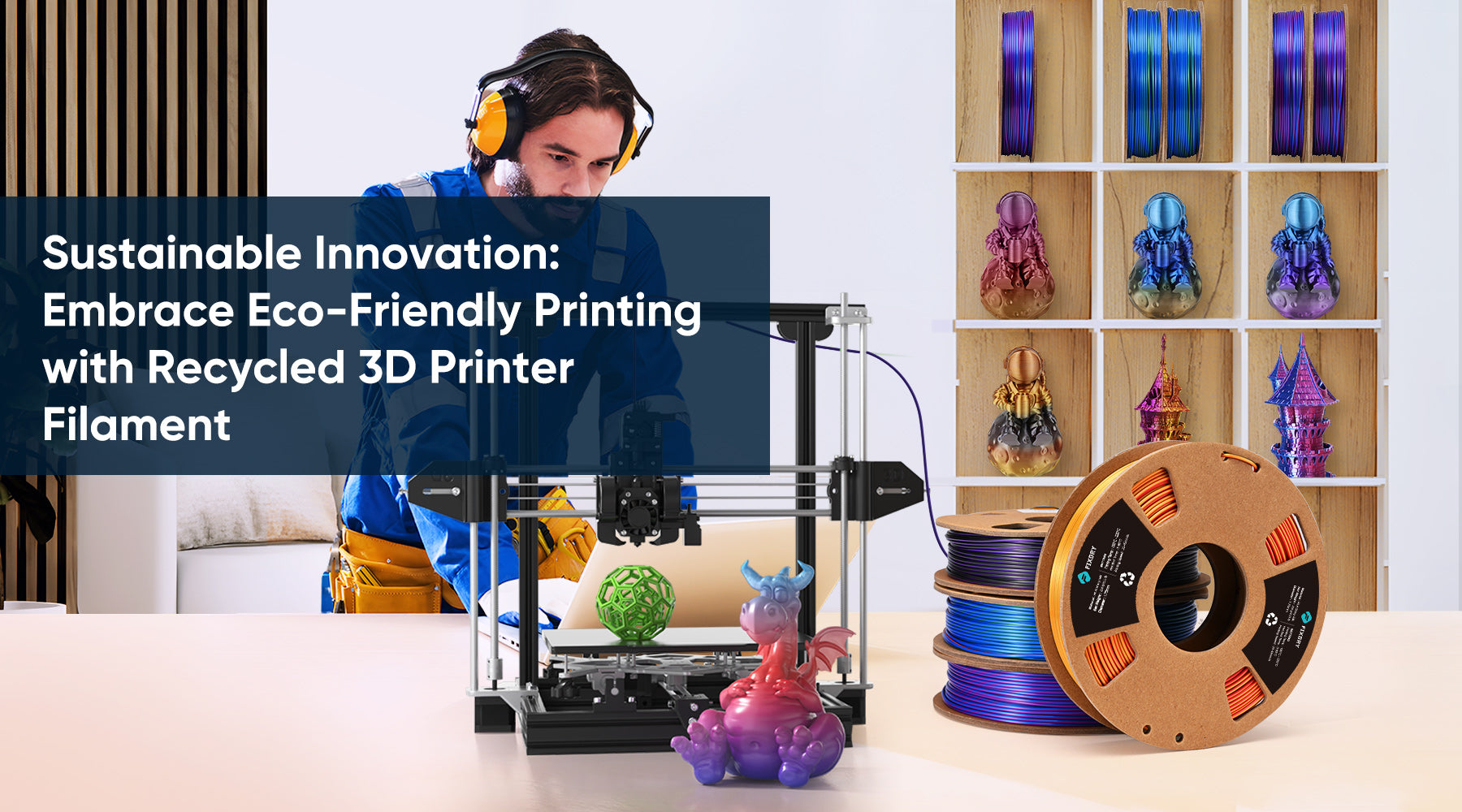
Sustainable Innovation: Embrace Eco-Friendly Printing with Recycled 3D Printer Filament
In today's world, where environmental concerns are more pressing than ever, it's crucial that we embrace sustainable practices in every aspect of our lives. From transportation to energy consumption, there are countless ways to reduce our carbon footprint. And when it comes to 3D printing, we can make a significant impact by using recycled filament. This blog explores the benefits of recycled 3D printer filament and how it enables us to embrace eco-friendly printing.
Traditionally, 3D printer filament is made from virgin plastics, which are derived from non-renewable resources and contribute to the growing problem of plastic waste. However, thanks to advancements in recycling technology, we now have the option to use filament made from recycled plastics. This means we can divert plastic waste from landfills and give it a new life as a valuable resource for 3D printing.
One of the key benefits of using recycled filament is its positive environmental impact. By opting for recycled materials, we can significantly reduce energy consumption and greenhouse gas emissions associated with the production of virgin plastics. Additionally, using recycled filament helps to minimize the extraction of raw materials, preserving natural resources and protecting ecosystems.
But sustainability isn't the only advantage of using recycled filament. It also offers excellent print quality and performance. Many manufacturers have perfected the recycling process to ensure that the recycled filament meets the same standards as its virgin counterpart. This means you can achieve high-quality prints while also reducing your environmental impact.
Moreover, using recycled filament opens up opportunities for creativity and innovation. With the wide range of recycled materials available, you can experiment with different colors and textures to create unique and sustainable designs. Whether you're a hobbyist or a professional designer, recycled filament allows you to unleash your creativity while being mindful of the planet.
Another significant advantage of recycled filament is its cost-effectiveness. As the demand for sustainable alternatives grows, the availability and affordability of recycled filament have improved. You no longer have to compromise your budget to embrace eco-friendly printing. With recycled filament, you can achieve your printing goals without breaking the bank.
Additionally, using recycled filament sends a powerful message to the 3D printing industry and beyond. By adopting sustainable practices, we encourage manufacturers to invest in more eco-friendly production methods and promote a circular economy. Together, we can drive change and pave the way for a greener future.
So, how can you embrace eco-friendly printing with recycled filament? It's simple. Start by researching and choosing filament suppliers that offer recycled options. Look for certifications or labels that ensure the filament is made from recycled materials. Experiment with different types of recycled filament to find the one that best suits your printing needs. And don't forget to recycle your own 3D printed objects when they are no longer needed, closing the loop of sustainability.
In addition to the environmental benefits, using recycled 3D printer filament also aligns with the growing demand for sustainable products. More and more consumers are seeking eco-friendly alternatives and are willing to support businesses that prioritize sustainability. By incorporating recycled filament into your 3D printing projects, you not only contribute to the preservation of the environment but also cater to the preferences of environmentally conscious customers.
Furthermore, embracing eco-friendly printing with recycled filament can be a source of inspiration and collaboration. The 3D printing community is known for its openness and willingness to share designs and knowledge. By advocating for sustainable practices and sharing your experiences with using recycled filament, you can inspire others to follow suit. Together, we can create a network of environmentally conscious 3D printing enthusiasts who exchange ideas, tips, and resources to further promote sustainability.
It's important to note that using recycled filament does not compromise the quality or capabilities of your 3D prints. The advancements in recycling technology have ensured that the recycled filament is just as reliable and efficient as its virgin counterpart. Whether you're creating prototypes, functional objects, or artistic designs, you can achieve the same level of precision and detail with recycled filament.
To maximize the impact of your eco-friendly printing efforts, consider exploring other sustainable practices in your 3D printing workflow. This can include reducing waste by optimizing designs, reusing failed prints or supports, and recycling or composting discarded prints. Additionally, you can explore bio-based or biodegradable filaments for specific projects that require even higher levels of sustainability.
In conclusion, incorporating recycled filament into our 3D printing practices is a small but significant step towards a more sustainable future. By choosing eco-friendly options, we can reduce plastic waste, conserve resources, and minimize our carbon footprint. So let's embrace the power of sustainable innovation and make a positive impact on our planet, one print at a time. Together, we can create a greener and more sustainable world.
